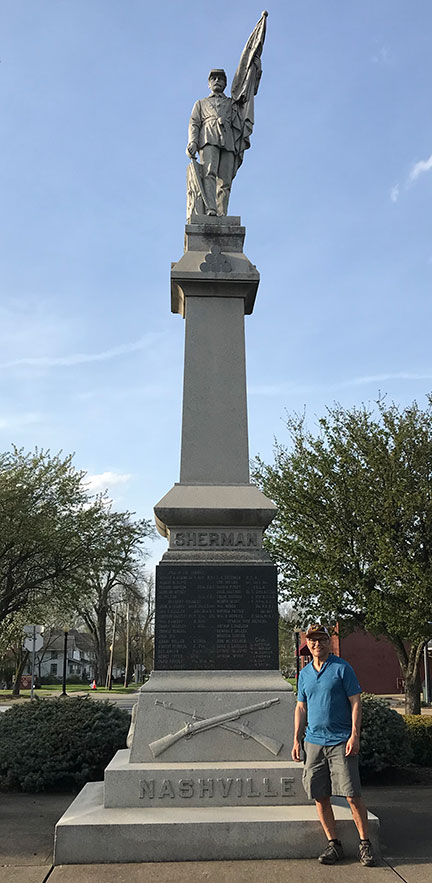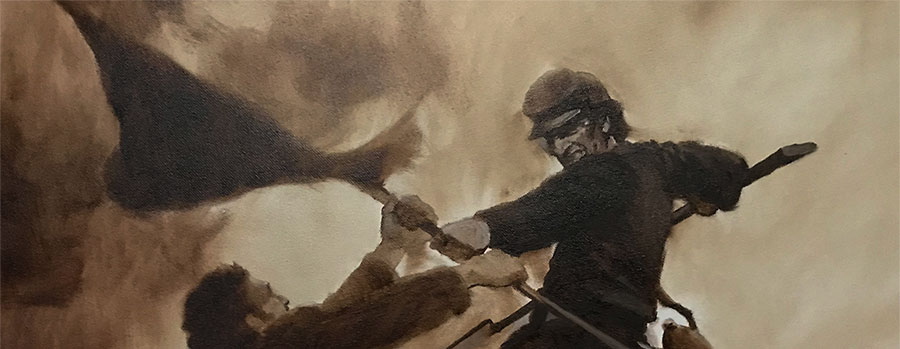Visiting the Civil War Monument in La Grange, Ohio
 Just this last weekend, as my wife and I visited my son and his fiance in their new house, we passed through a small town name La Grange, where there stands a large Civil War monument dedicated to soldiers of the nearby area who served in wars before 1903. On the way back home, we stopped so I could have my picture taken, and view the monument more closely.
Just this last weekend, as my wife and I visited my son and his fiance in their new house, we passed through a small town name La Grange, where there stands a large Civil War monument dedicated to soldiers of the nearby area who served in wars before 1903. On the way back home, we stopped so I could have my picture taken, and view the monument more closely.
The monument is about 25 ft tall with a large square base at the bottom. On each side of the bottom has a Union General’s name and the name of the battle at the base (Except for Thomas, which has a dedication plaque instead of battle below it). In between are inscribed the names of the men who served in the armed forces, with one side dedicated to the ones who gave their lives. The pedestal at top is of a sculpture of a Union soldier with a sword in one hand and the flag in the other.
On closer look, it seems that with the exception of the names of the soldiers that served, the monument is pretty generic. You would think that the Generals honored would have some sort of connection other than that they served for the Union. I thought that maybe there was an Ohio connection, which would have made sense. Both Ulysses Grant and William Tecumseh Sherman were born in Ohio, but George Thomas was born in Virginia and Philip Sheridan in New York. My guess is that they were chosen because they were the most successful of the Union commanders. Upon further research, my observation of the monument being somewhat generic may not be far off.
Monuments were sometimes mass produced
In an online article called “The Surprising Reason Why So Many Civil War Memorials Look Almost Exactly the Same”, many monuments were mass-produced and could be ordered from a catalog! As Kirk Savage, author of Standing Soldiers, Kneeling Slaves: Race, War and Monument in Nineteenth-Century America, explains: “With dealers and catalogs of readymade soldier figures, the industry could supply soldier monuments cheaply and quickly to local communities without them even having to approach a sculptor.” You can read more and view a video about this by clicking here.
 Medal of Honor for capturing the enemy flag
Medal of Honor for capturing the enemy flag